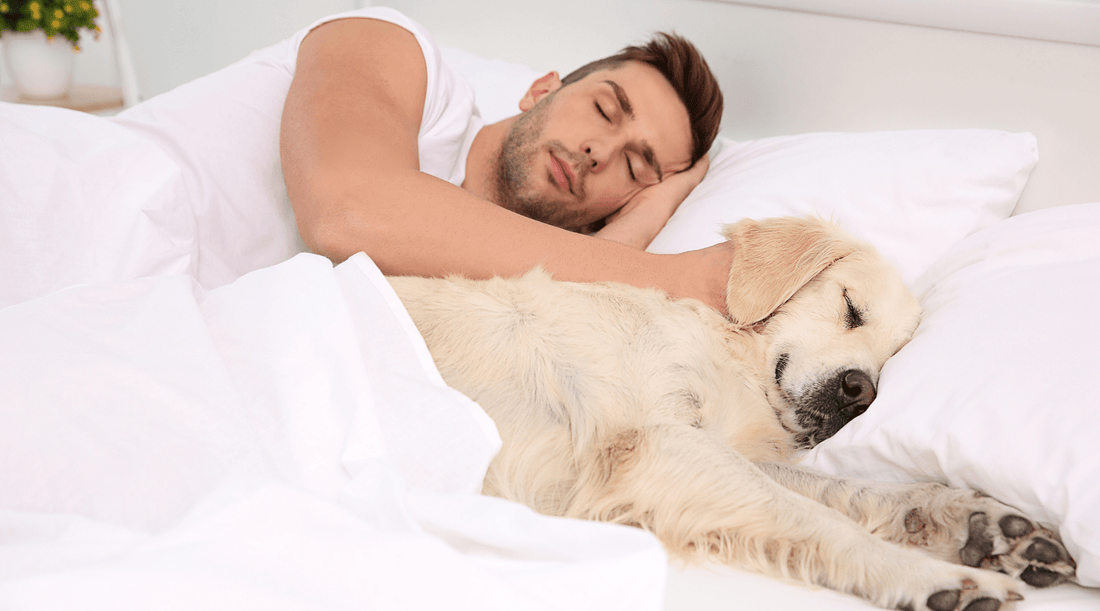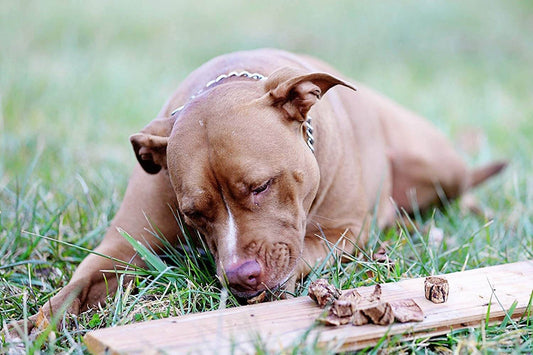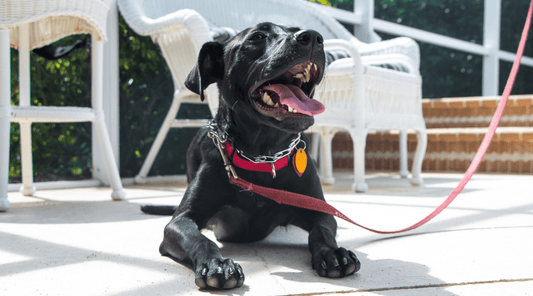
Should You Let Your Dog Sleep With You: Has My Bed Has Gone to the Dogs?
Dawn Miller Apr 09, 20255 Minute ReadThere’s nothing like cozying up under the blankets on a chilly night. But in my house, it’s not just me and my partner tucked in for the evening.
Nope. It’s me, my partner, Pixie the terrier, Bruno the lab mix, and...well, occasionally a stray squeaky toy that Pixie insists on keeping nearby. I certainly wouldn't recommend this arrangement on a full-size mattress. But for us, it works...most nights.
When people find out about our sleeping routine, their reactions range from a knowing nod to horror, so this begs the question: Should you let your dog sleep with you? Is it bad for you...or your dogs?
I'll be honest. For a while, I resisted this all the way. Despite being a lifelong dog person, Bruno never slept in the bed. He prefers his rug. But once we adopted Pixie, she managed to wiggle her way under the covers on night one. And once she was in, it was game over.
I can tell you. You will have some pros and cons to consider. Having a dog in your bed is not right for everyone. And you may be making some sacrifices. So, it's all about what's right for you...and any partner who may need a say as well.
Why Does My Dog Want to Sleep with Me?
Dogs are pack animals. They naturally want to be close to their “pack” (that’s you). Plus, you're warm when it's cold. And they may see themselves as your protector—or vice versa.
The Pros of Letting Your Dog Sleep With You
I’m not going to lie. There are some perks to having your dog snuggled up next to you at night.
1. Bonding and Security
Sleeping together can strengthen your bond and make your dog feel secure. Pixie, for instance, acts like the world’s tiniest guard dog when she sleeps on my feet. And honestly, it’s kind of adorable.
2. Warmth and Comfort
Dogs are basically fuzzy space heaters. Perfect for cold winters when the wind howls and the house feels just a little too chilly.
Bruno usually prefers the foot of the bed with a little distance between us. I'm just a bit over 5 feet on a good day, so it works. But when it's cold, he curls up like a giant cinnamon roll right against my legs, and let me tell you, it’s the most efficient heating system I’ve ever had.
3. Reducing Anxiety
For some dogs, being close to their owner at night can help reduce anxiety. This is especially true for rescue dogs or dogs with a nervous temperament. Anxiety is terrible for both human and dog health, so alleviating anxiety may also contribute to better health—just like a meaty dog bone after a long walk.
Now, if you're the one with the anxiety, the same thing goes. Sleeping with someone else in the bed, dog or otherwise, takes some adjustment, but can be very comforting.
4. It May Be the Natural Order of Things
For millennia, humans have slept in rooms (and beds) with animals (dogs, sheep, goats, even cows), especially in winter. You could say we're predisposed to share our sleeping areas with furry companions.
5. Better Immune Health
There is some evidence that children who are raised in homes with furry pets (or farm animals) have better immune systems. They're less likely suffer from allergies—of all kinds. Similar reviews on adults have shown an increase in a protective antibody.
But note, cuddles on the sofa probably have the same effects.
Is it Bad to Sleep with Your Dog?
It's not all cozy snuggles. Some compromise is part of the package deal.
1. Sleep Disruption
Dogs don’t always sleep through the night. They’ll scratch, kick, or chase dream squirrels—and your sleep might suffer for it. There have been nights where Pixie’s twitchy paws kept me up more than any midnight snack craving.
Sleep is essential to health. So, if you don't get a good night's sleep night after night, it's not worth it.
2. Behavioral Issues
If your dog gets too used to sleeping in your bed, they may resist being separated at night. And I'll just say it. If you have a partner, couple's time is important to avoid behavior issues in your human relationship. So, there's that too!
This can make crate training or independent sleeping more challenging...but essential.
3. Allergies and Cleanliness
Dogs bring a lot of...stuff...into bed with them. Pixie is a pollen magnet. From dirt to hair to the occasional bit of slobber, your sheets might not stay pristine for long.
If you have allergies, or an ick about a little filth, this is a real consideration. And I certainly recommend you wash your sheets more often than the average American—every one to two weeks instead of once a month.
How to Train Dog to Go to Bed Independently (breaking the habit)
Whether you just need a couple's night sometimes, or you can't take the pollen fur any more, here's how to break the habit, quickly and thoroughly.
Once the habit is broken completely, you can invite your dog into your bed some nights while ensuring it doesn't become a habit again. I'll tell you how. But first things first.
1. Create a Cozy Alternative
Make your dog’s crate or dog bed as inviting as possible. Soft blankets and a favorite toy.
2. Use Positive Reinforcement
Training dogs to go to bed works best with positive reinforcement. When they stay in their own space, reward them with a treat.
I always keep beef lung bites handy for training sessions. Pixie will do backflips for these treats.
I go into detail about how to crate train an adult dog here.
But spoiler: Give them a beef marrow bone and they'll learn quickly where they want to spend the night.
3. Establish a Routine
Dogs thrive on routine. If you make bedtime consistent, your dog will be more likely to settle into their designated spot.
Start with shorter periods in their bed or crate, then gradually increase the time.
After crate training (instructions linked above), you can say "go to crate" at bedtime and they will do it every time after some practice.
If they try to sneak into bed after you're asleep, simply say "go to crate". Be consistent. Don't laugh at them or pet them as they attempt to subvert the rules. The see these as rewards for their efforts.
4. Be Patient and Consistent
It takes time to change habits—especially if your dog has been sleeping in your bed for years. But stick with it, and you’ll see progress. Never let go to crate feel like punishment. Always use a cheerful voice and reward them with treats for obeying sometimes, even after they get it.
5. Don't Give In (Until You Can)
It's hard for dogs to understand why sleeping in your bed is okay sometimes. But it's possible once they go to crate without fail.
Just teach your dog an easily differentiated command like "bedtime" using positive reinforcement with single-ingredient dog treats and dog bones.
Want to teach your dog to sleep independently? Check out the 7-Day Dog Training Challenge for tips, tricks, and easy-to-follow videos.
👉 Join here
Available On:


Disclosure: This article may contain affiliate links, which means we may earn a small commission if you make a purchase through these links—at no extra cost to you. We only recommend products we trust and believe will benefit you and your K9.



